Getting started with Logically Accelerate
The Logically Accelerate product in action
In this section, we will provide an example walkthrough of finding misinformation with the Logically Accelerate product. Let's consider the example case where information was being spread that stated that Putin claimed Jesus is Black.
Logging in
The process begins with the user logging into the product, you should enter your username and password as provided to you by the Logically Accelerate team, and click "Log in".
Logically internal users can use their company provided OKTA login to access Accelerate. External users should use the normal log in option.
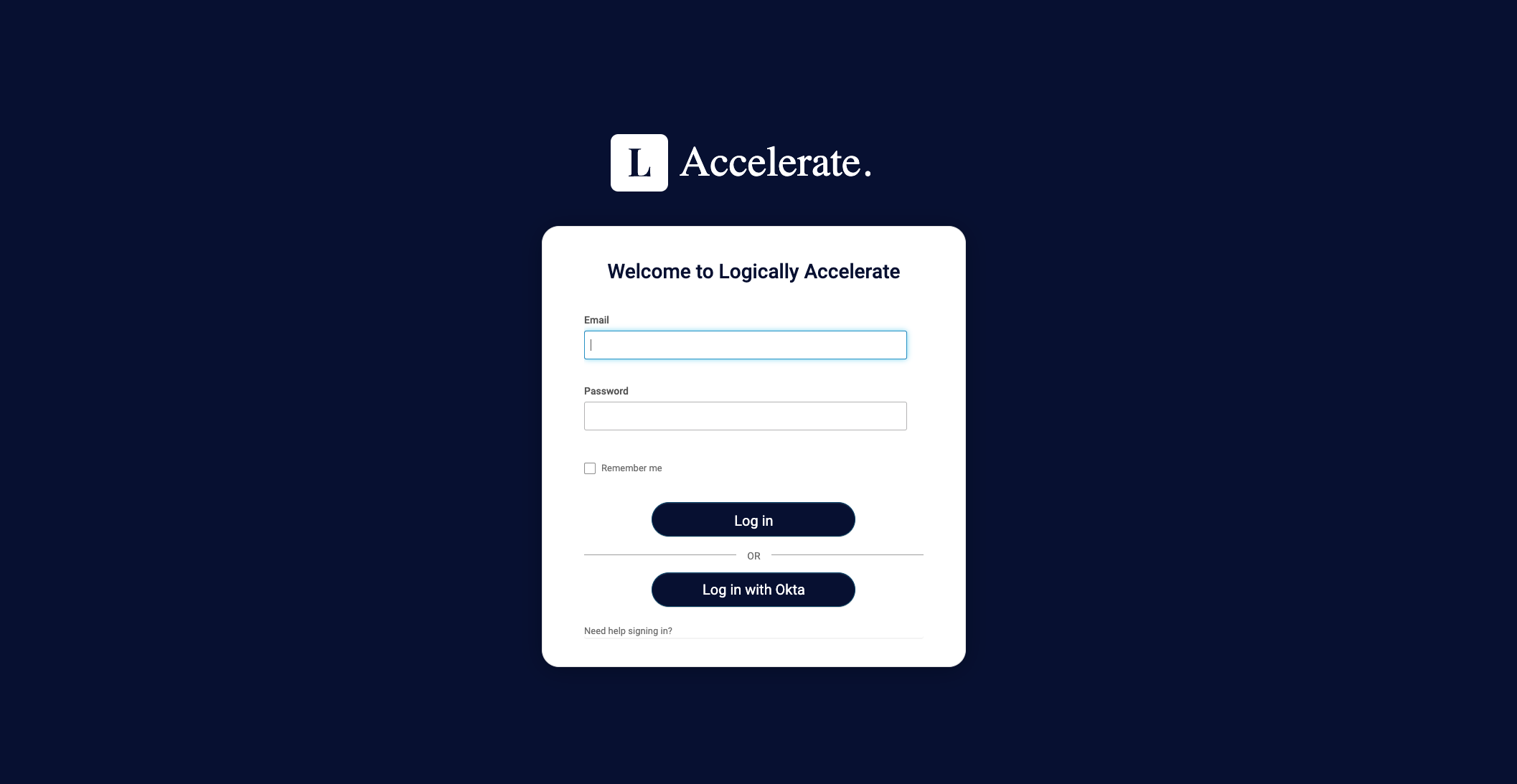
Logically Accelerate log-in page
Setting up the information environment
Trending topics
Once you have logged in successfully, you will be greeted by a view of Trending topics that will be tailored to the specific interests of your organisation (see Trending Topics Feed).
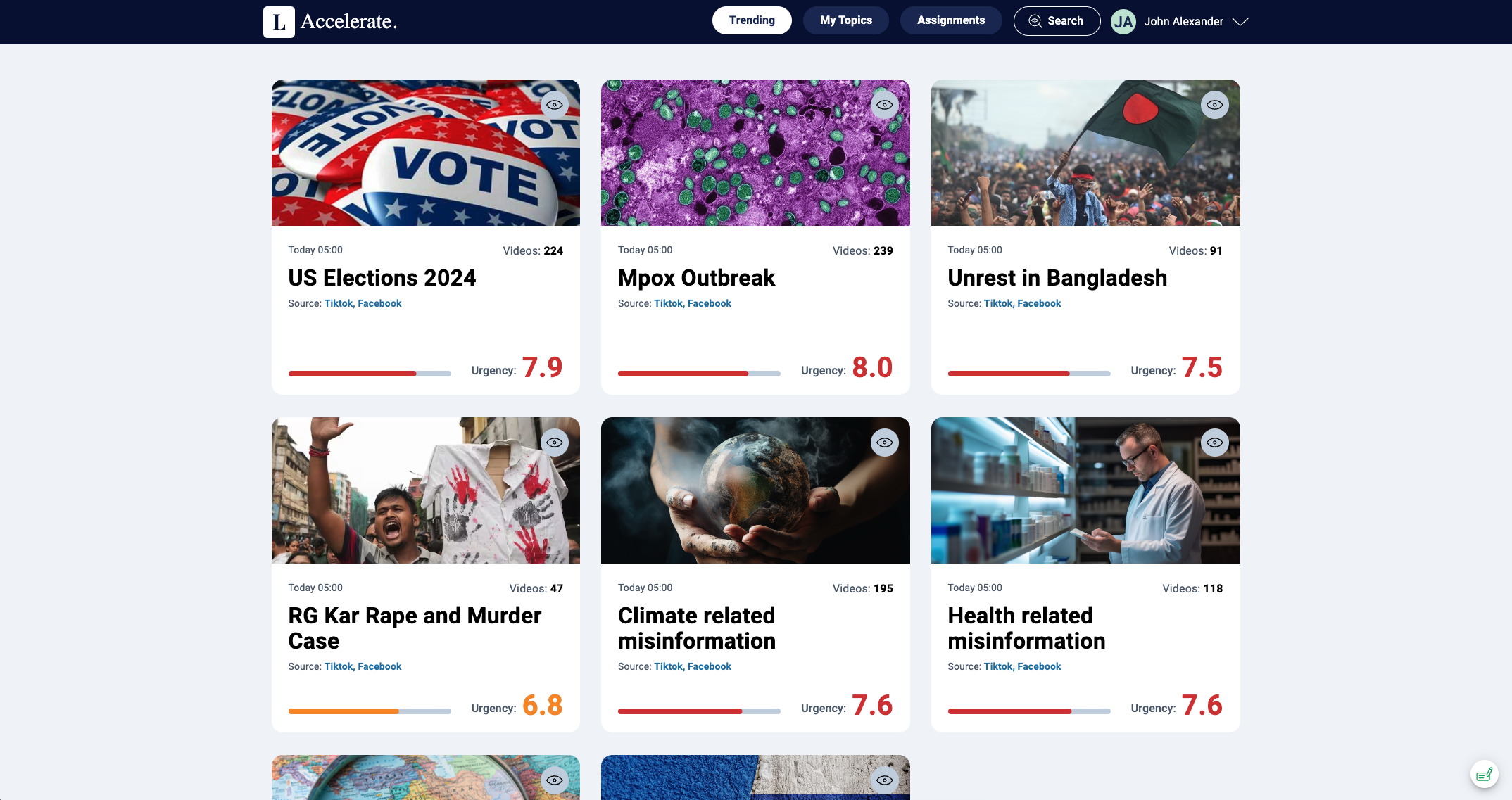
The default Trending topics, which will be provided out of the box.
You can browse trending topics such as US Elections 2024, or alternatively you can create a new search topic with a specific scope. To do this the user can click on the search button in the top right of the product, and a new pop-up window will appear (see Searching).
Custom search topic
Once you click search and the window pops up, you can now specify search terms, context terms, and exclusion terms related to their investigation, along with selecting a date range and the sources they are interested in.
We are going to search for some specific misleading content which claims that Putin has revealed that Jesus was black.
For our example case we have chosen the search term bless, blessing, blessed, blesses, heal, heals, healing and healed, and context terms pope and child. This is because we want to find all videos which mention pope and child where one of the terms related to bless or heal also appear. We selected a date range of the last week, as we know roughly when this content appeared and this is the date range we're interested in. Finally, we'd like to see content from TikTok, YouTube, and Facebook.
Each topic can have tailored weights for Relevance, Novelty, and Recency, depending on which factors are more or less important to the investigation. In this case, we have decided we don't need to change the scores, but we could come back and edit our search if needed.
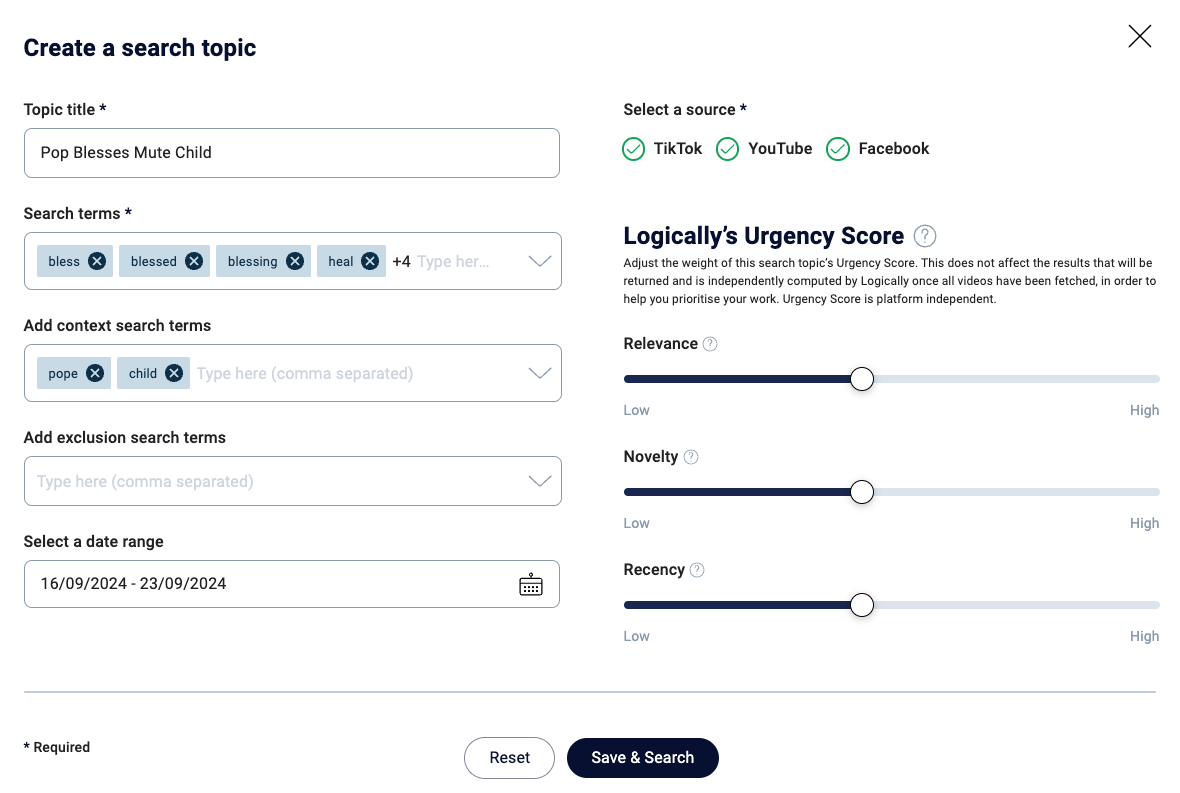
Creating a new search topic
Once you're happy with your search information you can click the Save & Search button.
Viewing your custom search topic
Once a search topic has finished loading, you can find results by navigating to My Topics, and selecting the topic with the title that we chose “Pope Blesses Mute Child”.

Custom search topics view
All videos detected for the search topic will be displayed on the feed, with information regarding the Urgency score, source and date clearly visible.
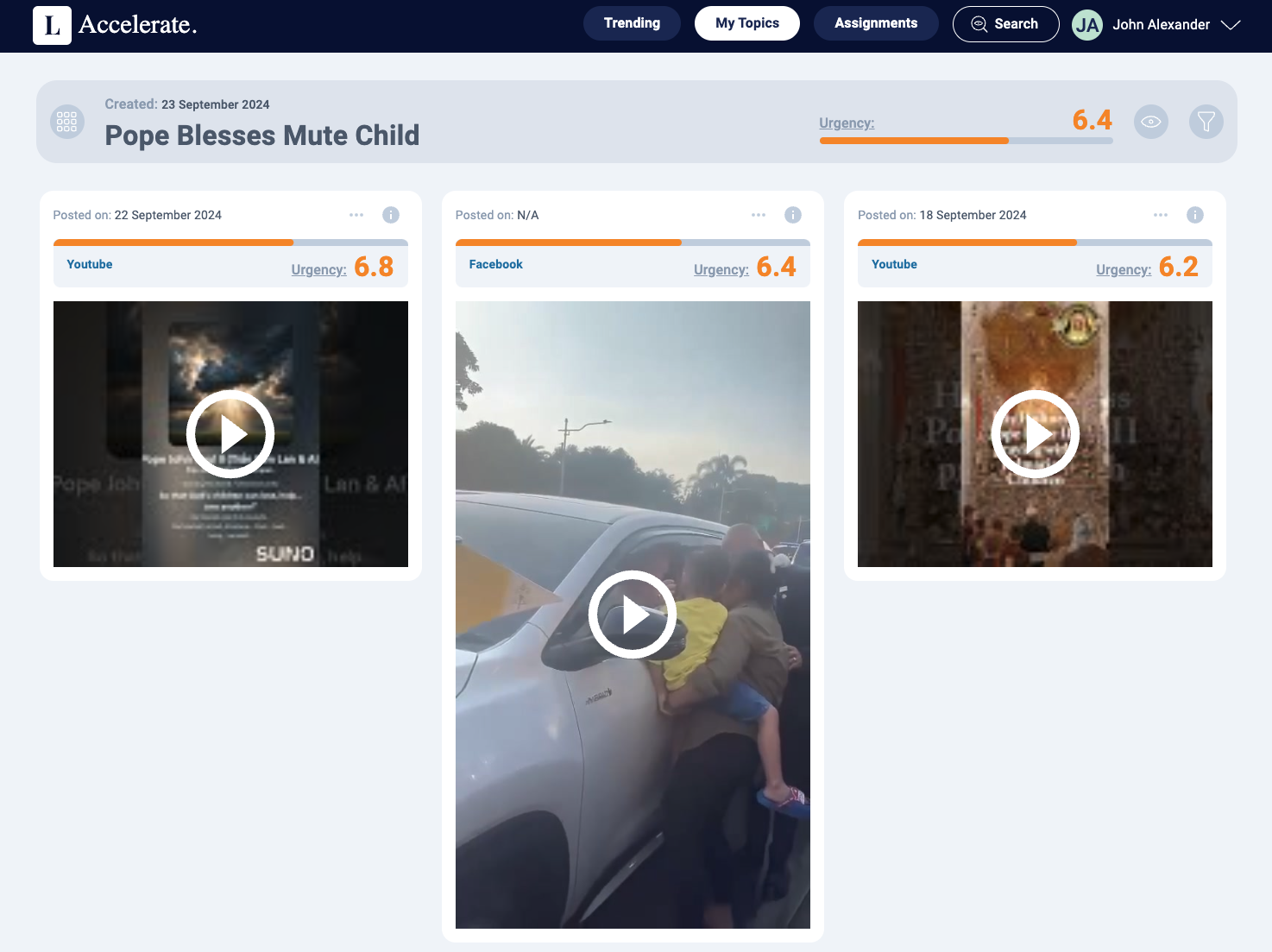
Inside the search topic titled "Pope Blesses Mute Child". Your specific results might vary as the information and content online changes.
Sorting the search topic results by Urgency
You can then filter and sort the results in your topic based on various criteria. The filter and sort button is available at the top right of the screen. By default, results are sorted by urgency, but you can choose recency, engagements or claims detected. Sorting the results by Urgency will place the highest urgency videos at the top of the topic feed and reveal the videos that are the most likely to contain content that the user will be interested in fact checking.
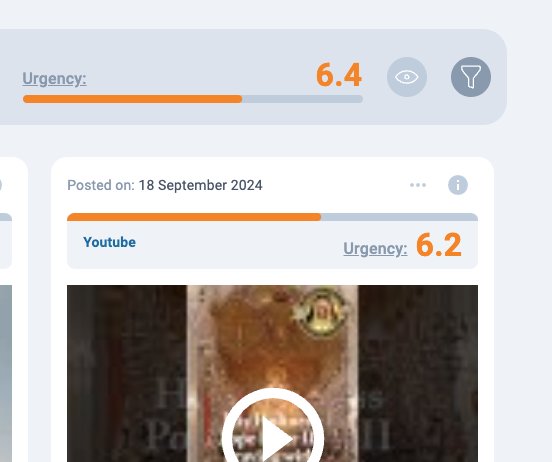
Filter and sorting button shown highlighted in the top right.

Filtering and sorting options
Video details
You can now examine the highest Urgency videos more closely. To examine a video, simply click on the i icon at the top right in the video tile. You can get a clear idea of the video's content without needing to watch it in its entirety. Clicking on the play button will open a new browser tab and take you directly to the source of the video.
Video metadata
Metadata about the videos is available in the detail view, along with a breakdown of the Urgency score for the particular video.
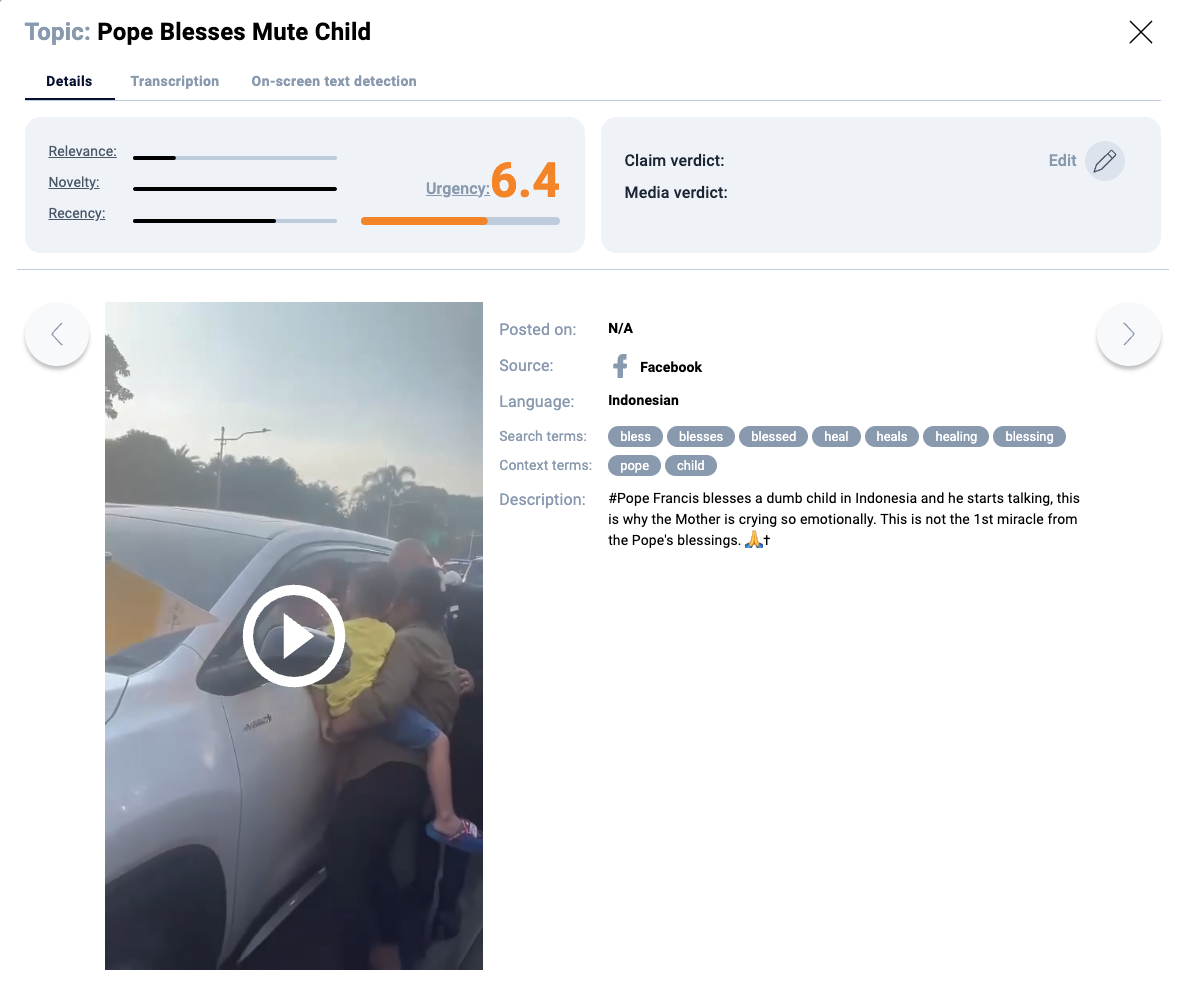
Video details: metadata including source, description, engagement and search terms used to match this video.
Transcription, claim detection & on-screen text detection
A transcription of the video's audio is extracted, with an additional translation provided if it's not in English. Claims detected in the transcription will also be highlighted in the transcription.
Any detected on-screen text is also extracted and viewable in On-screen text detection tab.
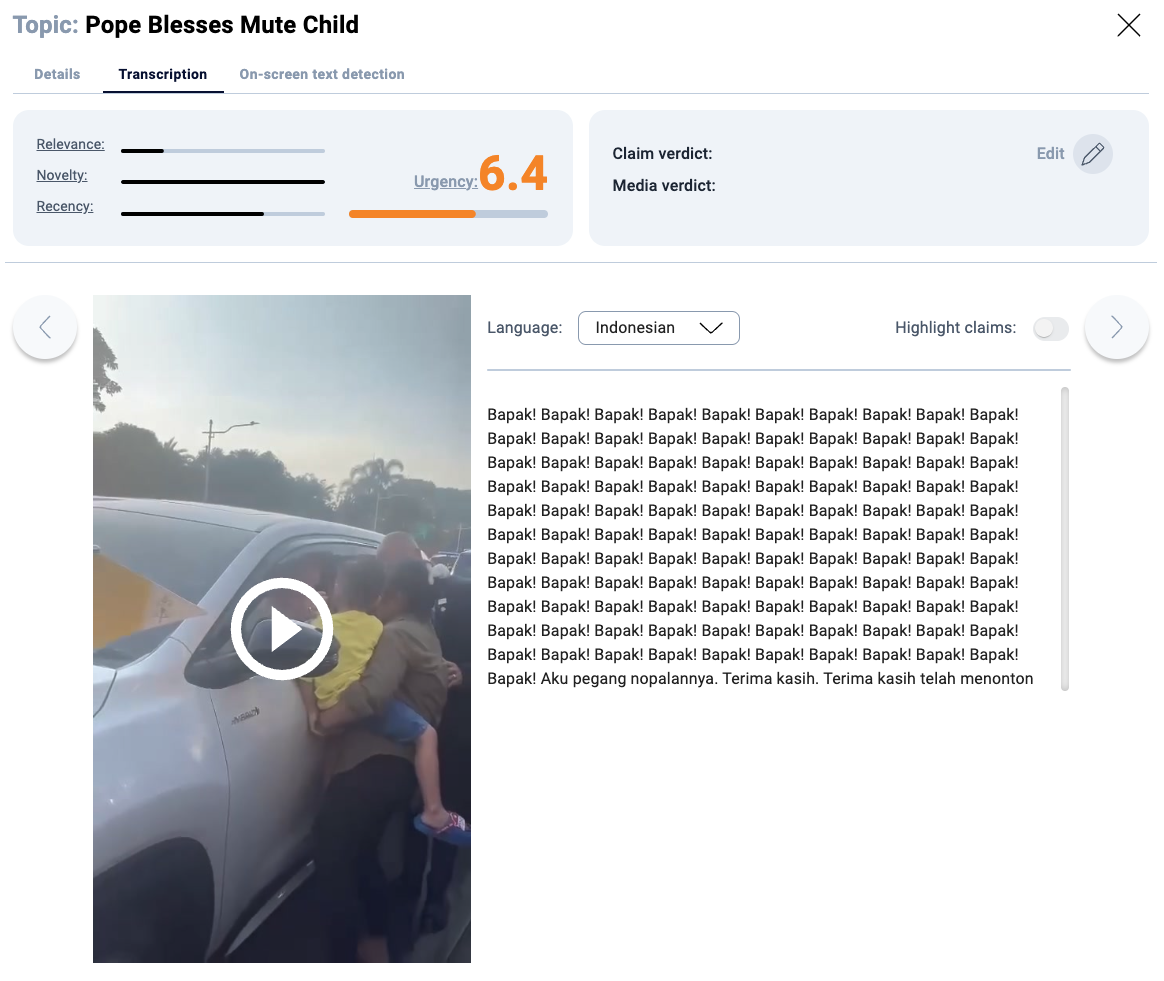
Video details: transcription, including highlighted claims.
Assigning a verdict
Once you have taken a look at the information on the video details page, you can assign a verdict to the video based on your assessment of the content. This label will be viewable in both the video details view and the search topic results view. This video clearly contains the misinformation we are looking for (based on the description and checking the transcriptions), so we can perform our Fact check assessments.
Now the user's workflow in Logically Accelerate is complete and they have successfully identified content containing misleading and deceptive content.
Updated 6 months ago
